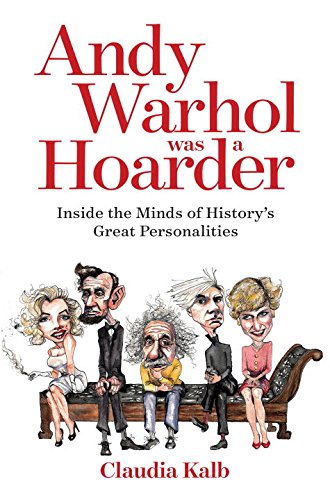
Andy Warhol Was a Hoarder
Inside the Minds of History's Great Personalities
درون مایههای شخصیتهای بزرگ تاریخ
کتاب های مرتبط
- اطلاعات
- نقد و بررسی
- دیدگاه کاربران
نقد و بررسی

December 7, 2015
Kalb examines a diverse collection of 12 notables, including Marilyn Monroe and Albert Einstein, who suffered, or may have suffered, from mental health conditions. According to Kalb, Monroe purportedly had borderline personality disorder, Andy Warhol was an inveterate hoarder, and famed architect Frank Lloyd Wright exhibited narcissistic personality disorder. While Kalb can definitively describe the mental health conditions of some of the more contemporary figures—Betty Ford (alcoholism), Princess Diana (bulimia nervosa)—she needs to resort to speculation on historical figures, and the language suffers from the necessary caveats: Abraham Lincoln “likely suffered from clinical depression”; “it could be argued” Charles Darwin had anxiety; “Was Einstein on the autism spectrum?” Kalb’s training as a journalist, not a psychiatrist, occasionally shows in less than clinical descriptions: “People with depression... are wired for despondency.” Still, Kalb fruitfully employs diverse sources, including psychology studies and published biographies, to tell the undeniably fascinating stories of her subjects. This is an informative compilation and it’s certain to provide readers with fascinating stories to share about an array of famous names. Agent: Gail Ross, Ross Yoon Agency.

February 1, 2016
Journalist Kalb (formerly of Newsweek) draws attention to 12 common mental health conditions by describing how each manifested itself in the personality of a historical figure. We learn that Marilyn Monroe probably suffered from borderline personality disorder; George Gershwin may have been afflicted by attention-deficit/hyperactivity disorder; and Frank Lloyd Wright demonstrated signs of narcissism. Individual chapters focus on a specific person and his or her situation, with Kalb first discussing the upbringing that formed their character, then introducing a mental illness, lucidly describing its etiology and manifestations. Drawing heavily on firsthand accounts, the author addresses individual cases, such as Betty Ford's alcoholism. She makes a cogent argument based on what is known of the individual and the condition being described. All in all, readers are left wondering what role the ailments played in the success of these individuals. VERDICT Expect wide appeal. This work will entertain those who enjoy reading about the quirks of the famous as well as inform those who may want to understand the disabilities discussed.--Lydia Olszak, Bosler Memorial Lib., Carlisle, PA
Copyright 2016 Library Journal, LLC Used with permission.

Starred review from January 1, 2016
Science- and health-journalist Kalb selects a dozen notable historical figures, applies diagnostic tools pulled from the American Psychiatric Association's Diagnostic and Statistical Manual of Mental Disorders (DSM) to their unique personality traits, and produces a diverting reader's digest of biographies that focus not so much on their lives but on their quirks. Although she acknowledges that mental illness and genius might seem mutually exclusive, she also makes a strong case supporting the fact that occasionally mental illness can actually enhance brilliance. For example, she advances a theory that Abraham Lincoln's chronic melancholy (what the DSM calls clinical depression) actually made him a stronger, more determined and pragmatic leader. It certainly would speak to Lincoln's personal grit to pull himself from the morass of despair in order to lead the country in a time of immeasurable turmoil. As for Princess Diana and her struggle with bulimia, it was torment for her, but her candor about it helped millions of eating-disorder sufferers. In all, Kalb's well-written exercise in applying modern psychiatric theory to historical figures, from Marilyn Monroe to Albert Einstein to Charles Darwin, certainly makes for some very entertaining armchair speculation.(Reprinted with permission of Booklist, copyright 2016, American Library Association.)

























دیدگاه کاربران